Insulation Tips
The Best Ceiling Insulation For Australian Homes
Did you know an uninsulated ceiling can contribute up to 35% of your home’s winter heat losses and summer heat gains? More than any other area of your home, it’s important that your ceiling is well insulated to keep out the heat in summer and retain the heat in winter.
In Australia, ceiling insulation is available in a variety of brands and R-values ranging from R3.0 to R7.0. Choosing the best insulation for your home is important. That’s why we recommend considering all your options beforehand.
What Is the Best Ceiling Insulation Material?
Ceiling insulation batts are most commonly made from glasswool or polyester. These two materials have excellent thermal properties, are easy to install and affordable.
Glasswool Insulation
Glasswool insulation is made from recycled glass materials and is the most common insulation material used in both residential and commercial buildings because it’s very affordable.
Although glasswool has a stigma of being itchy and uncomfortable to install, recent technological advances have improved this and today many glass wool insulation products claim to be low-itch or itch free.
Polyester Insulation
Polyester insulation is manufactured from recycled PET plastics such as drink bottles. Polyester insulation is bonded together by heat and no binder chemicals are added.
Polyester is more expensive than glasswool and is seen by some as a premium product because of its hypoallergenic properties. Since it contains no breathable fibres, it is safe for use in homes with asthma and dust allergies.
Ceiling Insulation Brand Comparison
At Pricewise Insulation, we stock a large range of reputable and high quality ceiling insulation brands, including Knauf Earthwool, Bradford Gold, Fletcher Pink Batts and Bradford Polymax Insulation.
Below is a list of the most popular features that each brand has to offer:
1. Knauf Earthwool Insulation
- Soft to handle and install (low itch factor)
- Manufactured from recycled materials
- ECOSE technology, renewable bio-based binder
- No dye or artificial colours
- No added formaldehyde
- Fire resistant
- 50 year product warranty
2. Bradford Gold Insulation
- Low allergen
- Made from up to 80% recycled glass
- Made in Australia
- 100% bio-soluble
- Non-combustible
- Resists shrinking, mould, rot or deterioration
- R-values up to 7.0
3. Fletcher Pink Batts
- Lightweight, flexible, and resilient glasswool
- Made from up to 80% recycled glass
- Firm and rigid batts making them easy to install between standard stud spacing
- Up to R6.0 for ceiling insulation
- Made in Australia
- 70 year product warranty
4. Bradford Polymax Insulation
- 100% polyester product – soft and easy to handle
- Non-irritant
- Odourless
- Made from up to 80% recycled fibre
- No waste is generated in manufacture
- Made in Australia
Does R-value Matter for Ceiling Insulation?
When considering the effectiveness of an insulation product, the most important consideration is the R-Value of the product. The R-value of any insulation material tells you how effective it is at insulating. In other words, how well it can stop the transfer of heat.
Read more: What does R-Value mean?
The higher the R-value, the more effective the insulation product is at slowing down heat loss and heat gain. A higher R-Value will help you keep your home a comfortable temperature year round and reduce your heating and cooling costs.
Although a higher R-value is ideal throughout the home, some areas require more insulative power than others. The ceiling is responsible for up to 35% of your home’s heat loss and gain which is more than any other area of the home. It’s therefore very important to consider which R-value you need in your ceiling.
What R Rating for Ceiling Insulation Is Best?
Firstly, it is important to follow the Building Code of Australia (BCA) requirements for ceiling insulation according to where you live. Australia has many different climate zones and each zone has its own requirements when it comes to insulation.
- Generally, we recommend installing ceiling insulation with a minimum rating of R4.0 for most major cities around Australia. That includes Perth, Brisbane and Darwin.
- If you live in Melbourne, Sydney or Adelaide upgrading to an R5.0 or R6.0 is recommended. In these cooler climates a higher insulating power is required to minimise heat loss during the coldest part of the year.
- For alpine conditions we recommend an R6.0 or R7.0 as this is the highest available R-value and most effective for these conditions.
Should I Upgrade to a Higher R-value in My Ceiling?
Due to the rising cost of energy in Australia, many homeowners are choosing to upgrade to a higher R-value than the minimum recommendations set out in the BCA.
Well insulated homes are able to maintain a comfortable temperature throughout the year and rely less on artificial heating and cooling methods.
So not only does insulation help create a more comfortable indoor environment, it also has the potential to reduce your household energy consumption and save you money on your power bill.
Insulation is a long term investment, bringing benefits that last for decades. The Insulation Council of Australia and New Zealand (ICANZ) claims that the payback period for home insulation is around 3 to 5 years.
Ceiling Vs Roof Insulation – Which Is More Important?
Ceiling insulation is installed between or on top of the ceiling rafters whereas reflective roof insulation is installed under the roofing material. Both play an important role in preventing heat loss and gain.
In most cases, using both ceiling batts or rolls in conjunction with reflective roof insulation is the most effective. However, it’s important to consult expert advice, especially if you are planning a DIY installation.
Ceiling insulation batts and rolls are referred to as bulk insulation and are best for preventing heat transfer through conduction. Reflective insulation on the other hand helps reflect radiant heat. Some products (such as Knauf Earthwool roofing blanket) have both a bulk and a reflective component.
Where to Buy Ceiling Insulation Online?
If you’re wondering where to buy insulation online, Pricewise Insulation has you covered. We stock a huge range of insulation products from Australia’s most reliable brands. Our products come in a wide selection or R-Values to suit climates across Australia from Darwin to Hobart and everywhere in between.
Call us today on 1300 729 639 to discuss your project or start browsing our ceiling insulation products now.



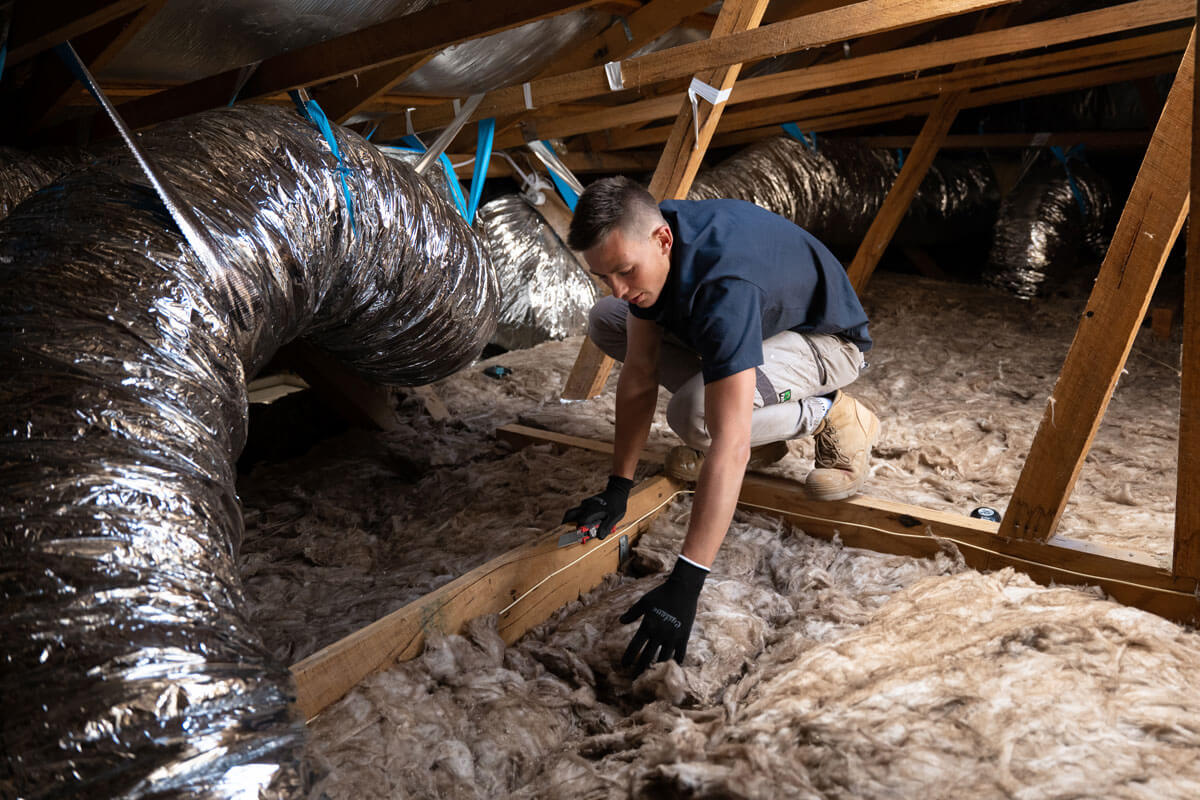
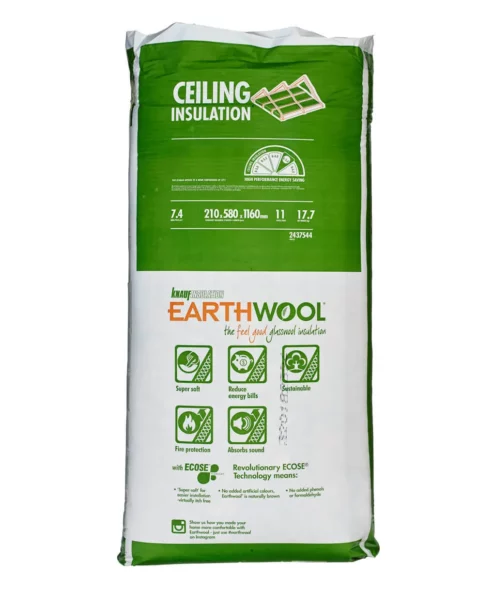
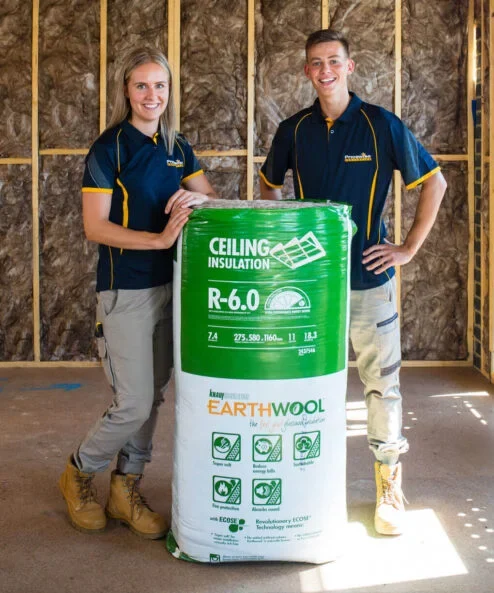
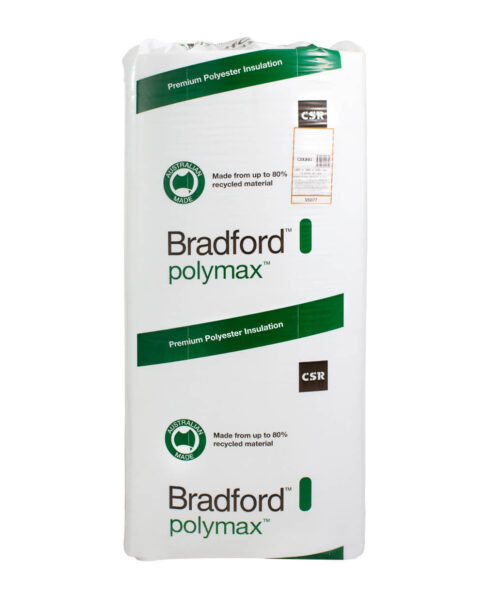
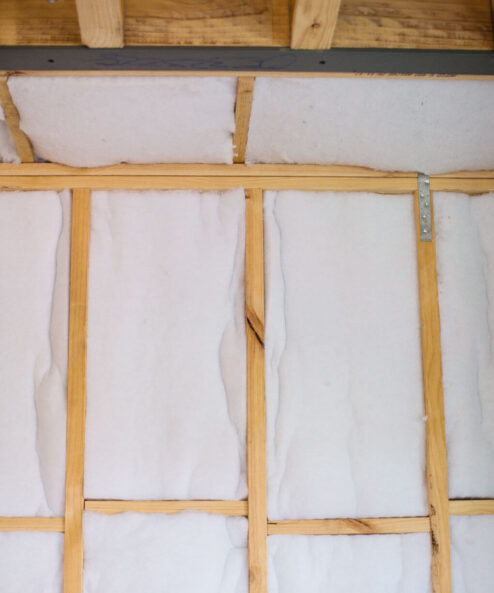
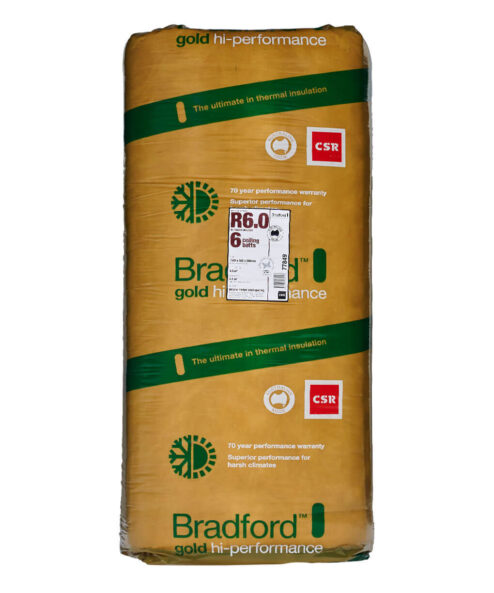
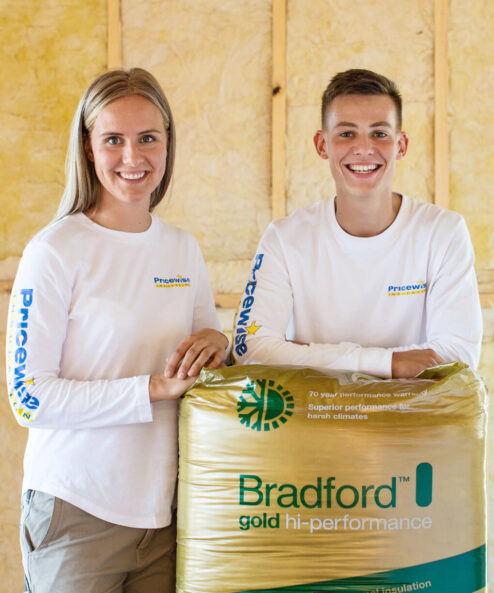
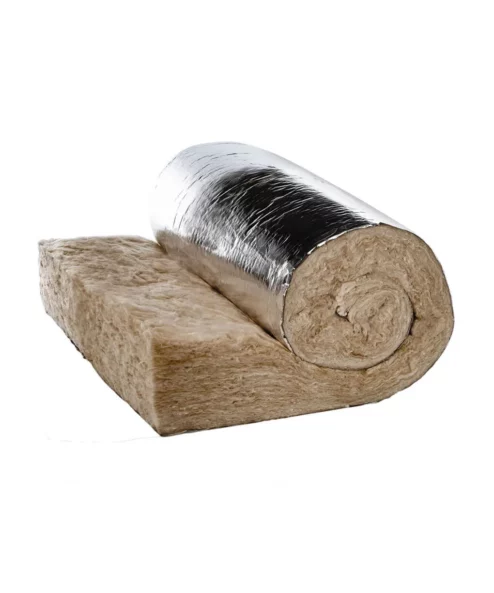
Hi, I need to retro fit insulation in the ceiling of a dwelling with cathedral ceilings.
Zincalume roof over 150 x 50 purlins on king post trusses with lining secured to underside of purlins.
Is there an R5 product that would fit into the 150 mm – 40 mm foil sarking – cavity?
Hello Les,
Thank you for your question. The highest R-value to fit within 150mm space is the Earthwool R4.0HD 140mm thick batt.
On our online store this is labelled as Knauf Earthwool Acoustic Mid-Floor Insulation Batts. Feel free to contact us on 1300 729 639 if you have any more questions. Cheers!
Hi I have a 165mm cavity on my cathedral ceiling what is the best insulation I can fit in that pls
Hi Nikki,
Thanks for your question. The product that we’d recommend for your application is the R4.0 Knauf Earthwool SoundShield Insulation (140mm thick). Please feel free to call 1300 729 639 if you have any questions.
Feel free to contact us if you have any further questions.
Cheers,
Christa
Hi can we have quote for the R4 1 bradford gold batts not in carport and eaves
Address 26 chadwell st Kenwick
Thanks
Hi Stefanie and Jon,
Thanks for your enquiry. Please send the total number of square metres (m2) to sales@pricewiseinsulation.com.au and our team would be happy to quote you.
Cheers!
Christa
Hi, I’m looking for insulation between floors (building double storey in Melbourne ). Main focus being noise cancellation along with thermal properties. Which R rating and bats would you recommend?
Hi Roy,
Thanks for your question regarding your new double storey home in Melbourne. The product that we recommend for between floors is the R4.0HD Knauf Earthwool® Acoustic Mid-Floor Insulation Batts. At the time our video about acoustic insulation was made in 2019, this product was not available. However, it now an easy choice for between floors in a double storey home.
These insulation batts are 140mm and offer both thermal and acoustic benefits, which make them perfect for mid-floor applications. They are considerably thicker than the R2.5HD Earthwool Sound Shield Insulation Batts (90mm thick) and more dense than even the R6.0 Earthwool Ceiling Insulation Batts. The R6.0 batts are around 11kg/m3, whereas the R4.0HD batts are around 21kg/m3.
This product is available here in both 430mm and 580mm widths to suit your home. Feel free to give our team a call on 1300 729 639 if you have any questions.
Hi, I am considering ceiling insulation for the roof cavity of a second story, in Melbourne. I would prefer non flammable. What would you suggest?
Hello Janine,
I would recommend the Earthwool ceiling batts as they are non-combustible.
Good evening, I am about to redo my bathroom. I have spray wool insulation that’s 20 plus years old in the ceiling and no wall or floor insulation. I live in Launceston so temperatures are frequently at or below zero in winter overnight and up-to high twenties in summer. The room only gets afternoon sun as the exterior wall to the bathroom faces west.
The room has a floor area of approx 6sq mtr. What are your suggestions?
Hi Arturo,
Thanks for your question. We would recommend the following combination of products for your bathroom:
Underfloor: R2.5 Underfloor Insulation (you can also use R2.5 acoustic wall insulation for this purpose)
External Walls: R2.5 Wall Insulation
Roof: R6.0 Ceiling Insulation
You could also insulate the internal walls to reduce noise transfer between rooms. Feel free to give a team on 1300 729 639 if you have any further questions.
Cheers,
Christa
We are elderly and live in an area of Queensland that gets very hot (40’s) as well as very cold (minus temperatures).
Our house is old with high ceilings and roofing iron will need to be removed to install insulation.
Our budget is limited.
Which type of insulation would be best for us please?
Hi, I would like to put insulation in the roof cavity of my duplex. Could you recommend what would give me the best result as I live on the Gold Coast.
Hi Marilyn,
Thanks for your question. We recommend a minimum of R4.0 ceiling insulation for homes on the Gold Coast.
Cheers,
Christa
Your post is very helpful right now. Thank you for sharing this informative one.
Hi, I am from Sydney, renovation work is going on. Handyman using 2.0 22 wall batts ( 1160*430*90) for wall .
For celling R3.5 10 calling batts (1160*580*185mm)
Please let me know the best one.
Hi Guruprasad,
We generally recommend R2.5 wall insulation and R5.0 or R6.0 ceiling insulation for Sydney homes. Feel free to give our team a call on 1300 729 639 if you have any further questions.
Cheers!
Hi, I need some insulation for my duplex on Gold Coast. I have blow in currently which is old and no longer very effective. What would be best and can this be laid over the old stuff?
Hi Mary,
Thanks for your comment!
Yes, it is possible to install new insulation over existing blow-in insulation, provided the current insulation is in good condition. If there are issues such as rodent damage or moisture affecting the existing insulation, we recommend consulting with professionals to assess the situation. Feel free to reach out to our team on 1300 729 639 for assistance.
To determine the appropriate R-value for your duplex in Brisbane, we would need to evaluate the condition and thickness of the existing ceiling insulation. Our general recommendation is to aim for a minimum R-value of R4.0 to ensure effective insulation for your specific location.
For additional insights, we suggest checking out our informative video titled ‘What to Check Before Buying Roof Insulation in Australia‘. This video provides valuable information that may guide you in making well-informed decisions regarding your insulation needs.
Furthermore, our blog post on ‘Insulation for Older Homes‘ could be a valuable resource for you. This post delves into considerations and recommendations tailored for older homes.
I hope that helps!
Warm regards
Felicity
Thank you so much for sharing with us.
Hi, looking for ceiling insulation options in steel scissor truss cavity. 16m by 6m wall to wall. Will be installing insulbreak blanket under colourbond .
Also using insulbreak as a wall membrane so would need 70mm batts for steel frame wall cavity 70 m/2 wall area
Hi Craig,
Thanks for your comment. We’d recommend R2.0HD Knauf Earthwool SoundShield Insulation (75mm thick) for the external walls and R4.0 Knauf Earthwool Insulation or higher for the ceiling.
We’ve got a blog post about installing a 75mm thick insulation batt in a 70mm cavity which you can read here.
Cheers,
Christa
Why is it that the “best” insulation that is available in Australis has a R rating of only 7?
Labor introduced ceiling insulation for all…R2 is what people got…..silver paper is better!
The US and Europe go up to 24 and further.
Standard wall insulation there is R12
Is Australia being sold another dud again?
Hi Chris,
Thanks for your question. Different countries use different R-value systems, so an R2 in Australia is very different from an R2 in the United States. An R12 in the United States is about an R2.2 in Australia. You can work this out by dividing the R-value by 5.7.
Cheers,
Christa
Hello. We are building a new property in Southern Gold Coast, our builder wanted to “just put the bare minimum” and/or no insulation. We have upgraded to the following and want to know if this is adequate for our climate:
Roof – anticon blanket 60mm
Ceilings – Bradford Gold 3.5R to both floors
External walls – 2.5R with sarking/wall wrap and cladding
Internal Walls – 2.0R acoustic batts
Would you recommend increasing any of the above, the roof to 80mm? the ceiling insulation to 4.0R?
Thanks in advance,
Shawn
Hi Shawn,
Thanks for your question. Yes, we would recommend upgrading to R4.0 or higher for the ceilings in Queensland.
We’ve got a blog post with videos about this here.
Please don’t hesitate to contact our team on 1300 729 639 if you have any further questions.
Kind regards,
Christa
Hi, We’re considering installing a higher rating material in our ceiling as the existing pink batts aren’t making much, if any difference. We installed double glazing at an outrageous cost and the difference was negligible. The house is brick veneer.
What do you recommend? Selling the house is not an option.
Hi Joe,
Thanks for your questions. A recent study by Climate Council indicated that installing roof insulation is the most effective way to reduce your energy bills, so you would certainly benefit from high quality roof insulation. We have a video on this blog post about ‘What to Check Before Buying Roof Insulation in Australia‘.
If the existing insulation is in good condition and neatly installed, then you can top it up with another layer of insulation batts. However, if the insulation has been damaged by moisture or rodents, then we would recommend replacing it altogether. We would opt for a high R-value such as R5.0 or R6.0 ceiling insulation. You could also consider a double layer of R3.5 ceiling insulation to achieve an R7.0 The first layer is installed neatly between the joists, and the second layer is installed in the opposite direction to reduce thermal bridging.
For your walls, you could consider getting blow-in wall insulation installed by a professional. The company we recommend in Melbourne is EcoHome Insulation.
Feel free to give our team a call on 1300 729 639 if you have any further questions.
Kind regards,
Christa
Further to previous comment should the pink batts be removed first
Hi Joe,
Thanks for your question – we answered it under your other comment.
Kind regards,
Christa
In Tasmania, what is the highest R value insulation options I can put in a cathedral ceiling with only 90mm rafters (metal roof one side and gib on the bottom. I can remove roof metal for access but don’t want to do all that work and expense to install R2.5. Thank you.
Hi Steve,
Thanks for your comment!
To achieve the highest R-value, considering a PIR insulation board within the range of 70mm (R3.3) to 90mm (R4.5) is a great choice. These boards can be cut to fit seamlessly between your rafters. To enhance the effectiveness of this insulation, we recommended installing sarking directly over the roof battens once the PIR has been put in place.
One noteworthy option is the application of Kingspan Air-Cell Insuliner. This addition contributes to an increased R-value, further optimising the thermal performance of your roofing system.
Please don’t hesitate to call us on 1300 729 639 if you need further assistance. We’d be happy to help.
Kind regards,
Felicity
Hi there, just wondering what is the best insulation I can get when my metal roof has rafters that are only 70mm. There is an aluminium foil underneath the metal roof.
Thanks,
Joe
Hi Joe,
Thanks for your comment.
You could look at installing a R1.4 (50mm) acoustic glasswood batt between the rafters. This would leave a 20mm reflective air space between the batts. Additionally, adding foil will improve the ceiling’s total R-value.
Another option to achieve a higher R-value would be to install Kingspan Kooltherm or Pirmax PIR boards between the rafters. The 60mm Kooltherm board has an R-value of R2.75 and would achieve a total R-value of approximately R3.5.
We hope this helps you with your queries!
Kind Regards,
Felicity
I am looking to replace the insulation batts during renovation, currently getting mixed messages from local suppliers of ceiling Batts.
I have a lounge that faces west with double glazed tinted windows and outdoor mesh blinds to assist with blocking direct contact on the windows , ceiling has just been replastered and I wish to replace batts in the roof space. Colour bond roof with foil insulation over roof joists only 12 months old.
I have been advised as we are in Central Victoria we would require rating 5 to meet building code but installers are advising rating 3 ( roof has direct sun from mid morning, windows from mid afternoon.
Please help, what are you thoughts?
Hi Robynne,
Thank you for reaching out!
When it comes to renovations without an energy report, the good news is that you aren’t bound by specific minimum requirements. However, we always advocate for making informed choices to enhance your living environment. For your home in Central Victoria, we recommend considering installing R5.0 or R6.0 ceiling insulation.
You can find our recommended products here:
Additionally, I’d suggest reading our blog post ‘Best Ceiling Insulation for Australian Homes’ this will give you more insight on the best R-values and products to choose.
If you have any further questions, feel free to reach out.
Warm regards
Felicity